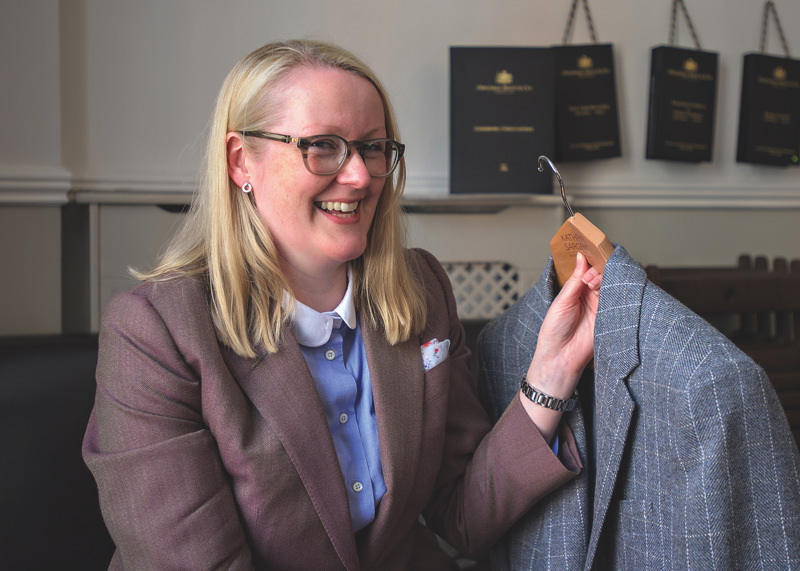Preview: Tailored
A long and proud heritage of tailoring is woven into the fabric of Leeds, as a new exhibition in the city reveals, says Ali Schofield
The Beatles raised eyebrows when, having studiously worn smart suits for several years, they rejected starched lapels in the mid-1960s in preference for the rebellious Nehru jacket.
This month Ringo Starr’s own round-collared Nehru jacket is on display among 25 pieces at Leeds City Museum’s new exhibition Tailored: A Very British Fashion.
“Dougie Millings, who’s known as The Beatles’ tailor trained in Leeds and is apparently the person who came up with the idea of them wearing the rounded collars on their suits” explains curator Ruth Leach.
It’s just one of the many connections Leeds has to the free entry exhibition, which explores tailoring from the 18th century to today and includes a programme of talks and workshops. Joseph Hepworth put Leeds on the map for tailoring in 1864 when he established the company now known as Next, and some 40 years later Montague Burton chose the city for his Burton’s factory; both names are represented in Tailored.
“When you say ‘tailoring’ a lot of people might think of Savile Row but actually Leeds has a massively important part in the story of dressing ordinary people,” says Leach. “The Leeds tailors made most of the demob suits for after the Second World War, for example.”
Although the city is no longer well known for its bespoke tailoring, Yorkshire’s cloth industry remains important, with its wool fabrics preferred by top design houses including Burberry and Vivienne Westwood. Leach and her co-curator Natalie Raw commissioned Leeds-born Savile Row tailor Kathryn Sargent, the first female to own a business on the renowned London street, to produce a suit especially for the exhibition, which will later become part of the museum’s wide-reaching archive.
“The opportunity of having my work on show in my home city of Leeds really appealed and I am thrilled that the suit we made will become part of the history of tailoring in the area for future generations to study and be inspired by,” say Sargent. The grey checked cloth she used to produce the suit was designed by a Leeds student and manufactured in Yorkshire.
“The wool textile industry started in Yorkshire and the best quality woven cloth for tailoring still comes from the mills there. It was extremely important to use cloth which had been hand woven and finished in Yorkshire. We wouldn’t consider working with anything else.”
Sargent has also produced a half-finished version of the suit to sit alongside it, giving visitors to the exhibition an idea of the craftsmanship involved in bespoke tailoring. These will be accompanied by a new season Vivienne Westwood suit, a teddy boy’s jacket from the 1960s, a suit owned by Edward VIII with trend-setting American-inspired wide legs and turn-ups, and a perilously impractical but beautiful white silk boy’s outfit embroidered with gold thread from the 18th century, the oldest piece in the exhibition.
Leach points out that one of the most exciting of the 18th century pieces is a woollen men’s sporting outfit, rare because such woven pieces don’t tend to last the test of time, which will swiftly be returned to the archives when Tailored closes early next year.
Tailored: A Very British Fashion is at Leeds City Museum until 3 January 2016

Leave a reply
Your email address will not be published.